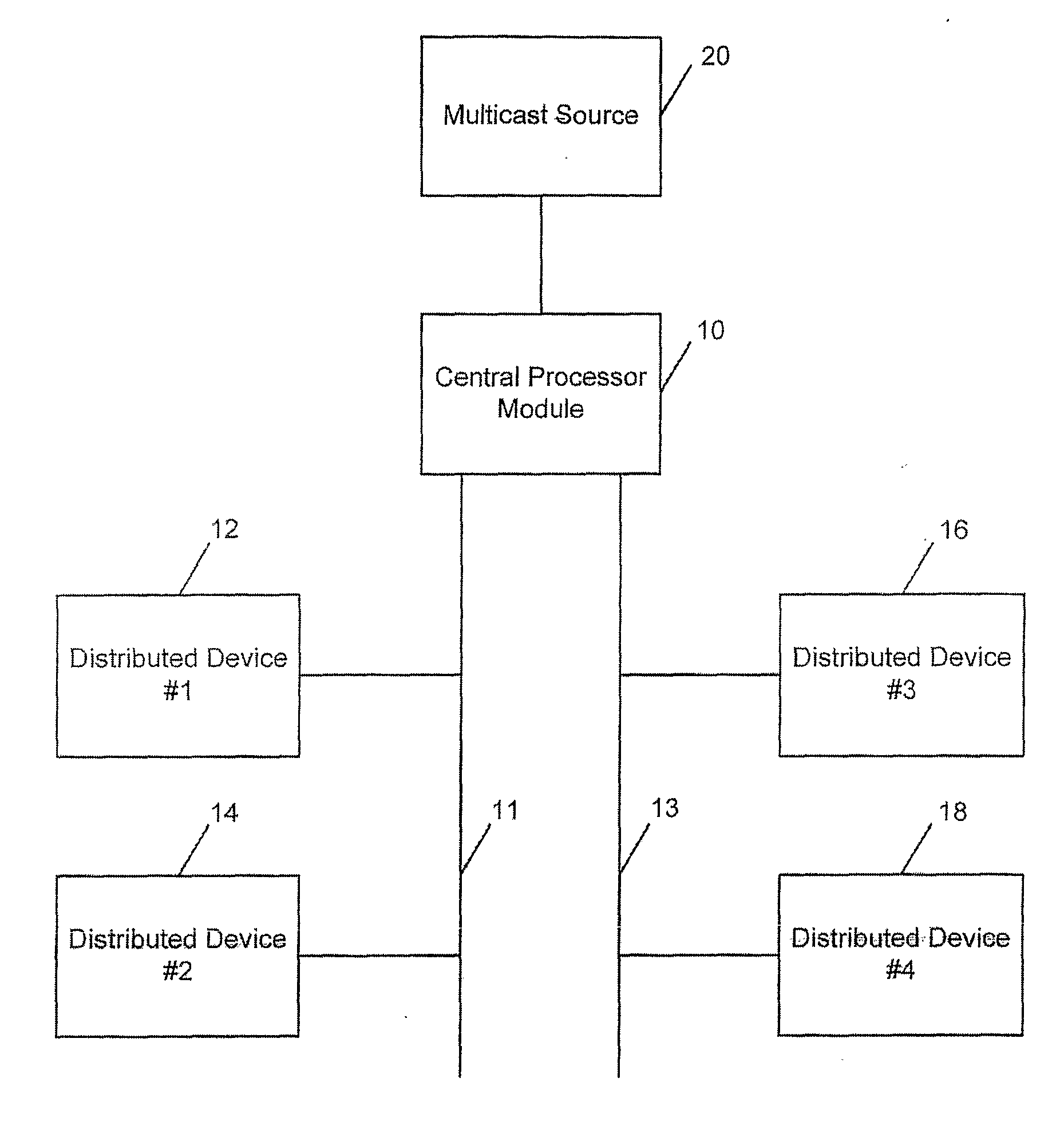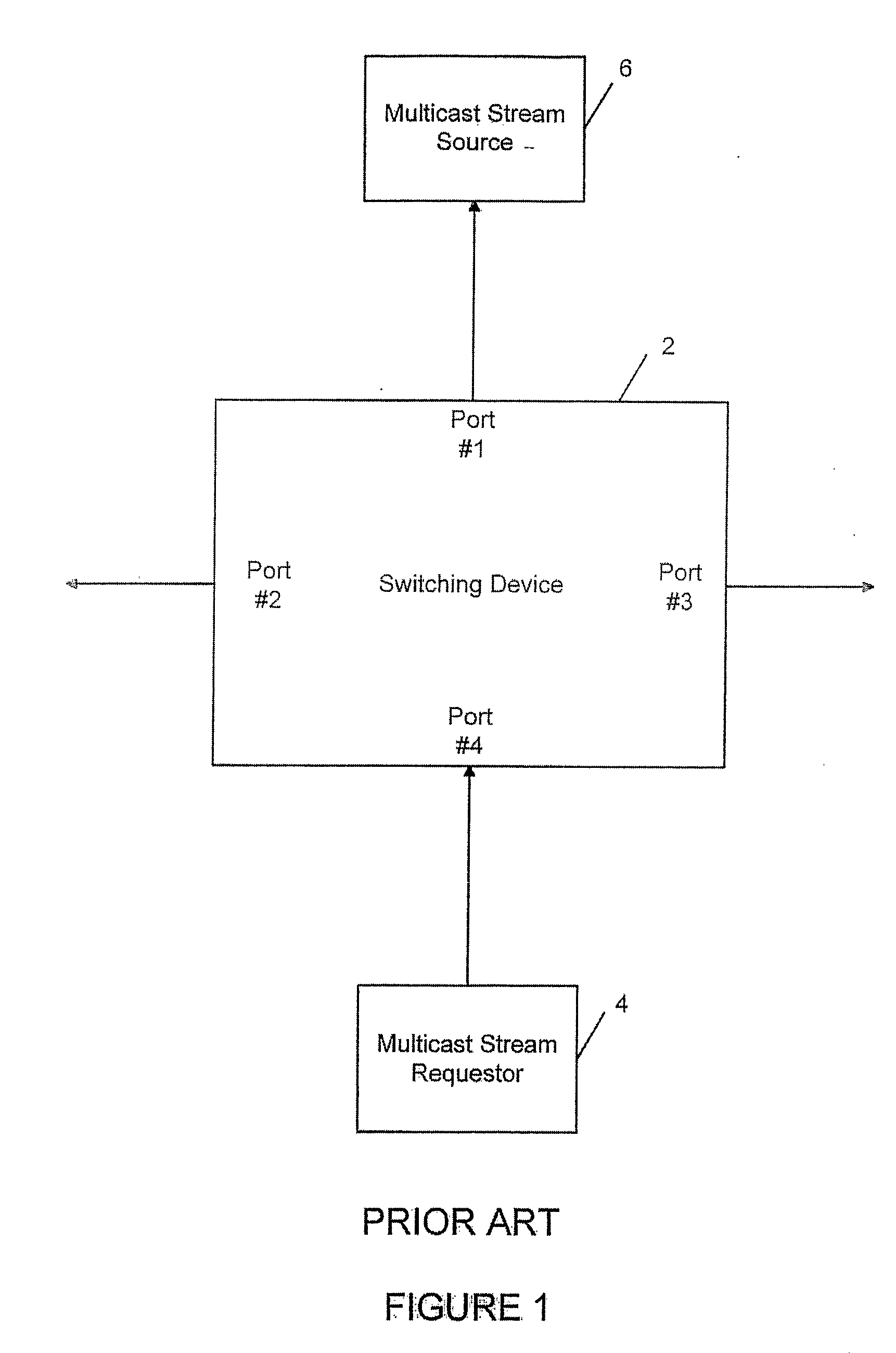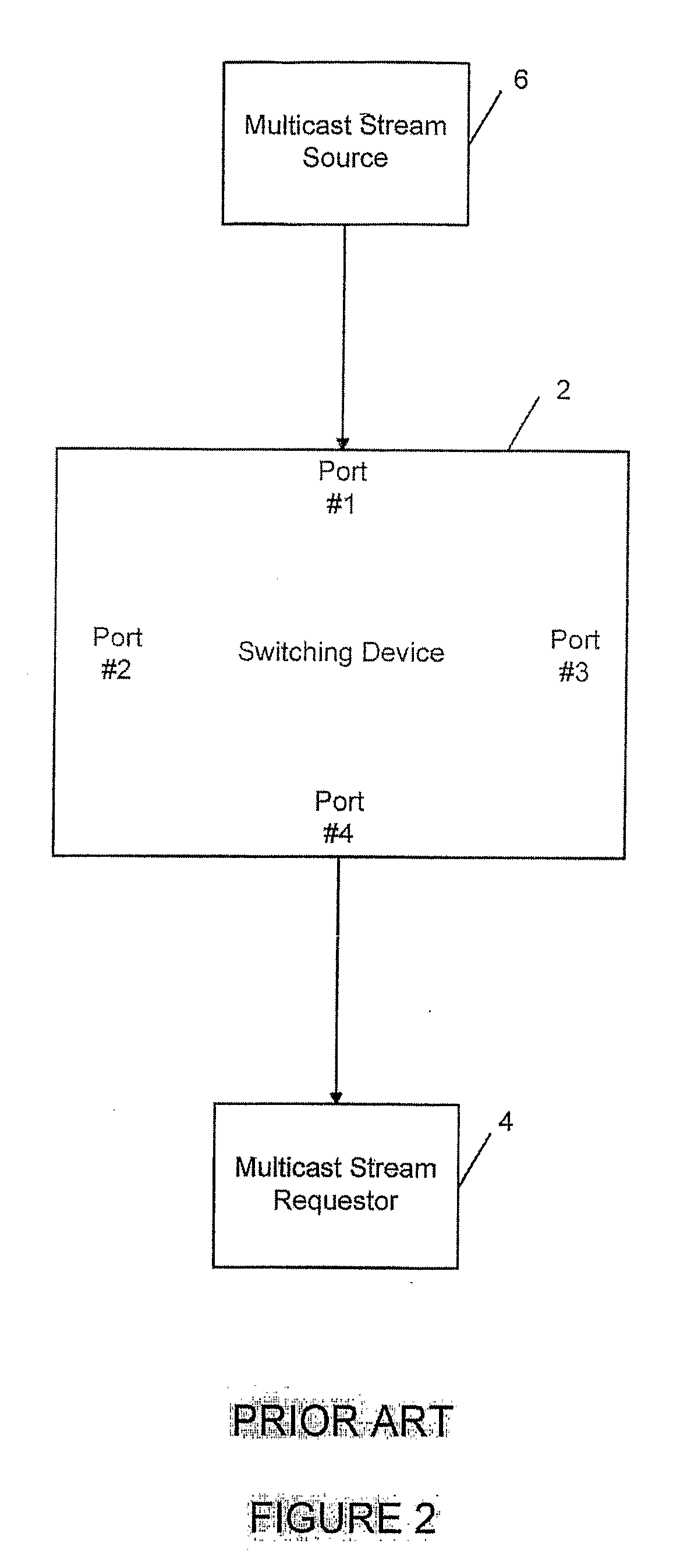Distributed IGMP processing
a technology of distributed igmp and processing, applied in the field of distributed igmp processing, can solve the problems of inability to ensure that the intended recipients actually receive the packets, limited igmp protocol, and inability to reliably transmit packets, so as to reduce the overall bandwidth and processing load of the central processor modul
- Summary
- Abstract
- Description
- Claims
- Application Information
AI Technical Summary
Benefits of technology
Problems solved by technology
Method used
Image
Examples
Embodiment Construction
[0043] As noted above, FIGS. 1-5 illustrate a conventional or prior art system utilizing IGMP protocol with an unreliable link. The present invention implements a distributed IGMP implementation utilizing a reliable link. It connects to one or more multicast data sources from one node within a collection of cooperating computing devices. Other computing devices within the collection of cooperating computing devices connect to one or more IP hosts who wish to receive the multicast data. All computing devices run autonomously and are geographically dispersed. By geographically dispersing the computing devices, overhead is reduced which means more efficient use of the computing device and more efficient use of the bandwidth. Dispersed CPUs collect information about what multicast traffic individual end users (consumers or multicast stream requesters) are interested in and then coordinate with a central processor module that will request these services from the multicast source.
[0044] ...
PUM
 Login to View More
Login to View More Abstract
Description
Claims
Application Information
 Login to View More
Login to View More - R&D
- Intellectual Property
- Life Sciences
- Materials
- Tech Scout
- Unparalleled Data Quality
- Higher Quality Content
- 60% Fewer Hallucinations
Browse by: Latest US Patents, China's latest patents, Technical Efficacy Thesaurus, Application Domain, Technology Topic, Popular Technical Reports.
© 2025 PatSnap. All rights reserved.Legal|Privacy policy|Modern Slavery Act Transparency Statement|Sitemap|About US| Contact US: help@patsnap.com



